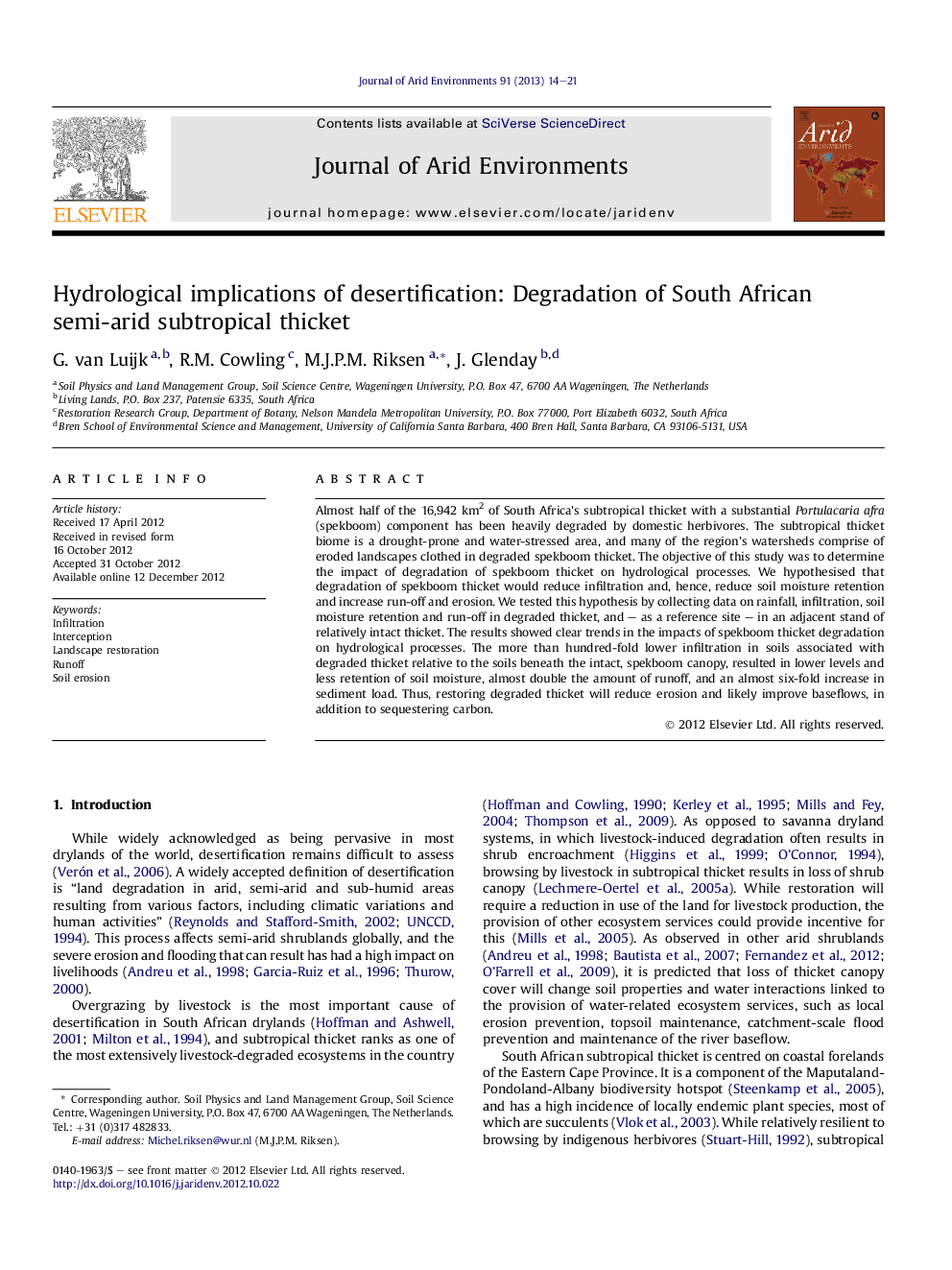| Article ID | Journal | Published Year | Pages | File Type |
|---|---|---|---|---|
| 4393213 | Journal of Arid Environments | 2013 | 8 Pages |
Almost half of the 16,942 km2 of South Africa's subtropical thicket with a substantial Portulacaria afra (spekboom) component has been heavily degraded by domestic herbivores. The subtropical thicket biome is a drought-prone and water-stressed area, and many of the region's watersheds comprise of eroded landscapes clothed in degraded spekboom thicket. The objective of this study was to determine the impact of degradation of spekboom thicket on hydrological processes. We hypothesised that degradation of spekboom thicket would reduce infiltration and, hence, reduce soil moisture retention and increase run-off and erosion. We tested this hypothesis by collecting data on rainfall, infiltration, soil moisture retention and run-off in degraded thicket, and – as a reference site – in an adjacent stand of relatively intact thicket. The results showed clear trends in the impacts of spekboom thicket degradation on hydrological processes. The more than hundred-fold lower infiltration in soils associated with degraded thicket relative to the soils beneath the intact, spekboom canopy, resulted in lower levels and less retention of soil moisture, almost double the amount of runoff, and an almost six-fold increase in sediment load. Thus, restoring degraded thicket will reduce erosion and likely improve baseflows, in addition to sequestering carbon.
► Restoration of degraded semi-arid thicket leads to big shifts in the water balance. ► Intact thicket has an interception rate of 40%. ► Degraded thicket shows increased runoff and erosion rates of respectively 59% and 83%. ► A steady soil moisture content between 30 and 50% is recorded under intact thicket.
